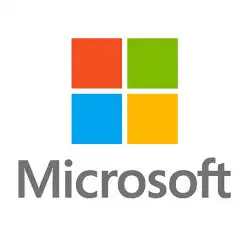Managing documents efficiently is essential for any organization looking to streamline operations and boost productivity. Effective file management not only helps in organizing files and folders but also eliminates clutter, making it easier to find and manage records.
Gone are the days of relying on physical filing cabinets; modern systems enable employees to access files when needed, creating an organized structure that enhances collaboration and efficiency.
Proper file management ensures that the right people have access to the right documents, reducing delays and improving decision-making. Whether you’re dealing with digital or physical files, the goal is to develop a system that simplifies how you store, track, and retrieve information, delivering a better workflow across your team.
In this guide, we’ll explore the key principles of document control and how a well-structured file management system can transform your organization’s ability to access and manage important files.
Key Takeaways
- Simplified Access to Important Documents: By implementing effective file management strategies, you’ll be able to organize your files and subfolders in a way that ensures you won’t need to waste time searching for important documents. Creating a system for storing and organizing files allows for quick and easy access when needed.
- Improved Version Control: With electronic file management, you can track multiple versions of the same document, reducing the risk of using outdated or incorrect information. Management techniques that include version control help ensure that the most recent and relevant files are always at your fingertips.
- Reduced Clutter and Improved Organization: Organizing files into folders and subfolders reduces clutter and makes it easier to find documents quickly. A structured approach to file management ensures that employees have access to the files they need, enhancing overall efficiency and reducing confusion.
- Efficient File Retrieval: Effective file management reduces the time spent searching for documents and improves workflow. By implementing clear naming conventions and organizing folders properly, you’ll be able to find and access files more efficiently, ensuring smoother operations across the team.
What is a File Management System?
A file management system is a complex tool that helps you organize and manage your files. Starting with the right filing system will pay off in the long run because it will make it easier to find certain files and give you faster access to the business information you need.

A well-organized file management system makes it easy to share, change, copy, and store information while protecting against malware and user error. At its core, a file management system gives you full control over all of your digital assets at any time by making them all easy to access with a few clicks. Overall, organizing files well increases productivity, makes processes easier, and helps businesses reach new levels of success.
The Benefits of Using a File Management System
There are many benefits to using an efficient file management system, including:
Organization
Document management helps you to keep your digital files organized, making it easy to find what you need when you need it. By establishing a consistent folder structure, using descriptive file names, and tagging files with keywords, you can quickly locate files and avoid wasting time searching for them.
Improved Productivity
With a file management system, you can automate routine tasks, such as file backups and file transfers, freeing up your time to focus on more important work. Additionally, with easy access to your files, you can work more efficiently and complete tasks more quickly.
Collaboration
A document management system can facilitate collaboration by providing a central location for team members to access and work on files. Collaboration tools, such as version control and access control, can also help ensure that everyone is working on the most up-to-date version of a file and that only authorized individuals have access to sensitive files.
Security
A file management system can help you to keep your files secure by providing access controls and password protection. With regular backups and disaster recovery plans in place, you can also ensure that your files are safe in the event of data loss or theft.
Cost Savings
By using a document management system, you can reduce the amount of time and resources spent managing your files, which can lead to cost savings in the long run. Additionally, with cloud-based file management systems, you can avoid the cost of purchasing and maintaining physical storage devices.
How to Choose the Right File Management System
Choosing the right document management system for your needs can seem overwhelming. But there are several factors to consider that can help you make an informed decision. Here are some key considerations when choosing a file management system:
Features
A robust file management system should include features that cater to your specific needs, such as seamless file sharing for efficient collaboration and automated backup and restore functions for data security. Version control helps you track changes and maintain organized records, while access control ensures only authorized users can modify or view files. Look for integrated automation tools and collaborative functionalities that streamline workflows and improve productivity.
Security
Security is a cornerstone of file management, ensuring your data remains protected against breaches or unauthorized access. Essential security features include encryption to protect sensitive files, access control to regulate user permissions, and regular backups to safeguard against data loss. A reliable system provides peace of mind by prioritizing the safety of your files at every step.
Ease of Use
A file management system should be straightforward and intuitive, reducing the learning curve for users. Prioritize systems with a clean, user-friendly interface that makes navigating and organizing files a breeze. Transitioning from paper documents to a digital system eliminates clutter and simplifies daily operations.
Compatibility
Compatibility ensures that the file management system integrates seamlessly with your existing infrastructure. Verify support for your operating systems, devices, and software, as well as common file formats like documents, images, videos, and audio. This ensures smooth functionality and reduces the risk of disruptions in your workflow.
Scalability
A scalable file management system is essential for adapting to the growing needs of your business. Whether you require more storage, additional user accounts, or expanded functionalities, the system should grow with you. Investing in a scalable solution saves you the hassle of switching platforms as your organization evolves.
Price
When evaluating costs, consider not only the initial purchase price but also ongoing expenses such as maintenance, updates, and potential add-ons. Balance affordability with functionality to ensure the system provides long-term value. Keep an eye out for transparent pricing models that fit your budget without sacrificing essential features.
Support
Strong customer support is vital for troubleshooting and maximizing the efficiency of your file management system. Look for providers offering comprehensive technical assistance, access to detailed documentation, and responsive customer service. A well-supported system ensures minimal downtime and helps you get the most out of your investment.
How to Implement a File Management System
Here are the steps to follow to implement a file management system in your business:
Assess Your Needs
Begin by analyzing your current file management practices to pinpoint inefficiencies and areas for improvement. Consider the types of files you need to handle, such as documents, images, or videos, and evaluate the volume of users who require access to these files. Additionally, assess the security requirements for your data, such as compliance with industry standards or safeguarding sensitive information, to ensure your system aligns with your organizational needs.
Choose the Right File Management System

After identifying your needs, research and select a file management system that provides the necessary features and functionalities. Look for tools that align with your specific requirements, such as robust security, seamless collaboration, automation, and scalability. A tailored solution ensures your organization operates efficiently while staying within budget and technological constraints.
Develop a File Organization Structure

Create an intuitive file organization structure that simplifies access and retrieval for all team members. This may involve categorizing files into distinct folders, standardizing file naming conventions for consistency, and employing tags or metadata to make searches more efficient. A clear structure minimizes confusion and saves time, fostering better productivity.
Migrate Your Files

Carefully transfer existing files into the new system, ensuring compatibility and preserving metadata for seamless integration. This may involve converting certain file formats or reorganizing data to fit the new structure. Proper migration is crucial for maintaining data integrity and ensuring a smooth transition to the updated system.
Train Your Team

Educate your team on the functionalities and best practices of the new file management system. Training should cover essential tasks, such as accessing files, uploading and categorizing new data, and collaborating with others. A well-trained team ensures smooth adoption and maximizes the efficiency of the system.
Establish File Management Policies

Implement clear guidelines for using the file management system to maintain organization and security. Define access permissions, file naming conventions, backup schedules, and retention policies to ensure consistency and compliance. These policies help streamline processes and protect valuable data from misuse or loss.
Monitor and Maintain the System

Regularly review how the file management system is being used to identify any issues or areas for improvement. Schedule routine backups to safeguard against data loss and stay up-to-date with software updates or upgrades to enhance performance. Ongoing monitoring and maintenance ensure the system remains reliable and efficient over time.
Best File Management Systems
| 3.5 | 3.5 | 3.5 |
Final Thoughts
A well-organized file management system is essential for reducing inefficiencies and ensuring your documents and files are always easy to locate. By implementing simple management tips, you can prevent important documents from being lost or misplaced and create a system that’s both secure and easy to navigate.
With virtual filing and proper folder structures, you’ll ensure that all records are retrievable when needed and that access is restricted to authorized personnel only, helping to protect sensitive information.
Don’t waste a lot of time searching for misplaced files—take control today by adopting effective file management practices and improving your team’s productivity. Start building a smarter system that keeps your documents secure and accessible now.
Read our other informative blogs to learn more about file management and fill in the form to subscribe to enjoy the latest deals and discounts on selected software.
FAQs
What Is Effective File Management and Why Is It Important?
Effective file or document management is the process of organizing, storing, and maintaining documents to ensure easy retrieval and control over files and documents. The importance of file management lies in its ability to increase efficiency, reduce clutter, and enhance project management, making it easier for you to find and manage your paperwork.
What Are the Benefits of File Management?
The benefits of file management include improved accessibility to files, enhanced collaboration among team members, reduced risk of file loss, and better organization of documents. By implementing effective file management techniques, businesses can streamline their operations and save time.
How Can I Keep My Digital Files Organized?
To keep your digital files organized, implement a clear folder structure, use descriptive file names, and regularly review and declutter your file storage. Employing a document management strategy can also help maintain order and ensure files are easy to retrieve.
What Are Some Effective File Management Techniques?
Some effective file management techniques include using consistent naming conventions for files, creating a logical folder hierarchy, utilizing file management software for electronic file management, and regularly backing up files on a hard drive to prevent data loss.
How Can File Management Help in Tracking Multiple Versions of a Document?
It can help track multiple versions of a document by implementing a version control system. This allows users to maintain records of changes made, making it easier to retrieve previous iterations and understand the evolution of the document.
What Is a Document Management Strategy?
A document management strategy is a systematic approach to managing files and documents throughout their lifecycle, from creation to storage and eventual disposal. This strategy includes establishing procedures for file naming, storage, and retrieval to improve overall efficiency.
How Can I Store Files Effectively?
To store files effectively, choose a reliable file storage solution that suits your needs, such as cloud storage or local hard drives. Organize files in a way that reflects their purpose and relevance, and implement management techniques to maintain order and facilitate easy retrieval.
What Role Does Electronic File Management Play in Overall File Management?
Electronic file management plays a crucial role in overall file management by allowing for the efficient organization, storage, and retrieval of digital files. It facilitates easy access to documents in multiple locations and enhances collaboration through shared access to files.
How Can I Reduce Clutter in My File Management System?
To reduce clutter in your file system, regularly review and delete unnecessary files, consolidate folders where appropriate, and adopt a disciplined approach to file naming and organization. This will help maintain a streamlined and efficient management system.
What Are Some Management Tips for Effective Document Control?
Some management tips for effective document control include establishing clear guidelines for document creation and storage, training staff on file management techniques, and utilizing technology tools such as document management software to automate and simplify processes.









